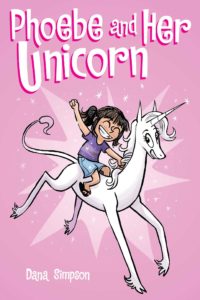 I have been making much of the fact that I’m basically reading nothing, or at a snail’s pace, or what have you. This is not entirely accurate, as a) I read rather a lot of comics (currently summer 1987, Marvel time) and b) I read rather a lot of kid books, mostly to the boy.[1] So many, in fact, that if I tried to write reviews for all of them, I would frankly have little or no leisure time left for anything else. Plus, kidbook reviews really don’t fit the aesthetic of Shards of Delirium, so I’d also need a new site (easy) and a new writing style (erm, less easy) to make it happen, and long story short, I opted not to go that way.
I have been making much of the fact that I’m basically reading nothing, or at a snail’s pace, or what have you. This is not entirely accurate, as a) I read rather a lot of comics (currently summer 1987, Marvel time) and b) I read rather a lot of kid books, mostly to the boy.[1] So many, in fact, that if I tried to write reviews for all of them, I would frankly have little or no leisure time left for anything else. Plus, kidbook reviews really don’t fit the aesthetic of Shards of Delirium, so I’d also need a new site (easy) and a new writing style (erm, less easy) to make it happen, and long story short, I opted not to go that way.
Plus also, imagine if I included a review per reread? Yeesh.
The difference, then, with Phoebe and Her Unicorn is that I did not read it to anyone but myself, egged on by Peter S. Beagle’s[2] effusive introduction. This is one of those comic strip collections, so my categorization may be off I suppose? Also, I have no idea where the comic strip exists. Newspapers? A website? Couldn’t tell you, unless maybe if I did research. A little girl is skipping rocks, and hits a unicorn in the nose, knocking her out of her narcissistic contemplation of her own reflection. For this favor, the unicorn offers to grant a wish, and the wish that comes out is for the unicorn to be the little girl’s best friend. Is it Calvin and Hobbes but for girls? Yeah, maybe, but is that fine? Yes, yes it is.
The book is endearing, sweet, and occasionally quite funny. I do not regret the 40 minutes or so I spent reading this first collection, and if more of them appear, I’ll probably read those too.
[1] I have really complicated feelings about how we started reading to the girl a lot later than to the boy, such that she has a hard time sitting still for it, which makes it hard to read to her, especially when someone else is competing for attention. Complicated feelings, also, about how this is an obvious self-perpetuating cycle. That is the number one thing I would change about how we have parented up to this point, if I could.
[2] The Last Unicorn guy
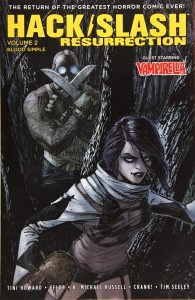
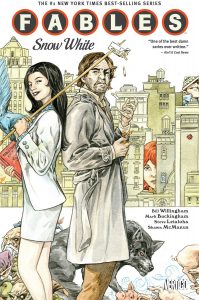
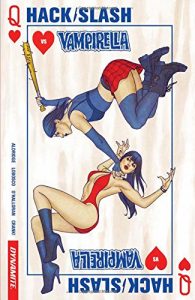 I know very little about Vampirella as a character, save that she exists and dresses… provocatively, let’s say. However, I know a great deal about Cassandra Hack, so I am qualified to speak on two thirds of the factors that went into this book.
I know very little about Vampirella as a character, save that she exists and dresses… provocatively, let’s say. However, I know a great deal about Cassandra Hack, so I am qualified to speak on two thirds of the factors that went into this book.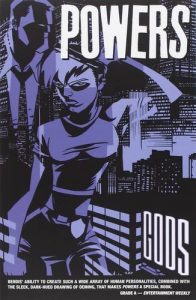 This is the last book in the Powers series!
This is the last book in the Powers series!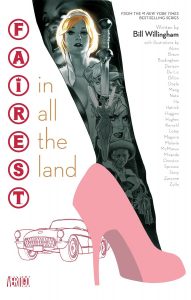
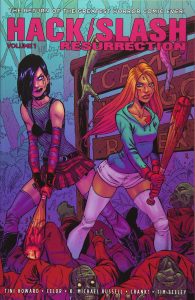 Some time back, I came to
Some time back, I came to 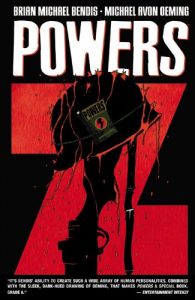 Considering how close I am to the end of the published Powers series, you would think I would not have gone three and a half years since
Considering how close I am to the end of the published Powers series, you would think I would not have gone three and a half years since 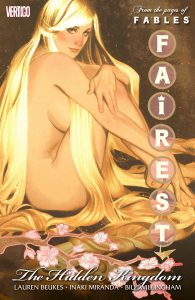 I’m going to start in a couple of weird places. First, a word about Amazon. I understand that it has turned into something of a flea market, like, from an observational perspective. This doesn’t bother me because I can mostly tell what I’m buying and what I’m not. I hear people talk about counterfeits, and I believe it, but I’m either okay at this or lucky, and either way, yay. I bring this up because I just saw something unpleasant while preparing for this review. The link I found for
I’m going to start in a couple of weird places. First, a word about Amazon. I understand that it has turned into something of a flea market, like, from an observational perspective. This doesn’t bother me because I can mostly tell what I’m buying and what I’m not. I hear people talk about counterfeits, and I believe it, but I’m either okay at this or lucky, and either way, yay. I bring this up because I just saw something unpleasant while preparing for this review. The link I found for 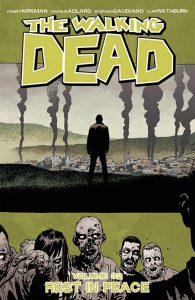 I’ve been saying since… well, at least since the end of
I’ve been saying since… well, at least since the end of